I’m not one for beating around the bush: I’m talking about potassium. And have you noticed that it’s a mineral we hardly ever hear about?
If you’re health-savvy you may know that potassium is an electrolyte and that we need to replenish our stores after we exercise.
But chances are you didn’t know that feeling physically, mentally and emotionally well is dependent on a continual supply of potassium to our cells – day in, day out.
Nor that we need a greater quantity of potassium than we need of any other mineral.
4,700mg a day, to be precise.
Compare that to our daily calcium, magnesium, iron and zinc needs — 1,000mg, 320mg, 18mg and 8mg respectively — and it makes no sense that we hear so much less about potassium than we do about these other minerals.
After all, we need nearly five times as much potassium as calcium. And we need nearly 600 times as much potassium as zinc.
Selenium is another mineral that’s talked about more than potassium — yet we can meet our needs for selenium by eating just two Brazil nuts a day. There’s no such shortcut to getting enough potassium; for most of us, that involves eating pounds of healthy whole foods every day.
And later in this article I’m going to walk you through the “potassium powerhouse” foods you need to know about so you can be sure you’re getting enough.
If you can’t wait you can scroll down to that last section of the article now.
But I truly believe that if we want to maintain good habits over the long haul we need to have as many good reasons as possible for sticking to ’em…so I first want to tell you a little more about how important potassium is to your health.
We’ll start with its relationship to sodium.
Busting the “salt is bad for you” myth
The fact we hear so little about potassium is curiouser still given how much we hear about salt’s role as the leading cause of high blood pressure.
And that’s because, contrary to what we’ve been told, when it comes to our blood pressure — and our overall health — the amount of sodium we consume is a lot less important than the ratio of sodium to potassium we consume.
Without getting too technical here adequate potassium keeps your blood vessels nice and relaxed, meaning healthy blood pressure and healthy arteries. And inadequate potassium? A recipe for hardened arteries, high blood pressure and an elevated risk of suffering a heart attack or stroke.
Enjoy salt? Me too. It’s perfectly fine to consume around a teaspoon of salt a day; most health authorities would now agree with this.
But here’s the thing: a teaspoon of salt contains 2,300mg of sodium. That’s less than half the daily recommended amount of potassium (again, 4700mg) – and that’s why it’s fine; as a rule of thumb, our potassium intake should be at least double our sodium intake.
But according to nutritional surveys, average sodium intakes in the Western world range from 3,000 to 4,000mg a day and average potassium intakes from 2,300 to 3,000mg. What this means is that most people are getting more sodium than potassium, and (you’ll forgive me for not sugar-coating this) that is a recipe for (a) feeling crap now, and (b) over the longer-haul, disease and early death.
And that’s because every cell in the body requires potassium for its proper functioning.
And the body doesn’t store this uber-essential mineral so you need to be giving your cells a daily supply of it.
Cranky, crazed or confused? Maybe you need potassium…
Potassium is essential for the electrical reaction that sparks communication between cells.
As just one example of this role, without adequate potassium your brain cells can’t communicate properly.
Hello foggy thinking, fatigue, mood swings, irritability and disorientation. And possibly anxiety, depression or even psychosis.
Having studied potassium’s effect on the brain I am convinced that many diagnosed mental disorders, from “depression” to “dementia”, are really, at root, potassium deficiency.
And not only are pharmaceutical drugs not the answer; if you suffer from any of the above problems and potassium deficiency is the cause, you can sleep, exercise, meditate and cleanse, and you can take supplements and follow an otherwise excellent diet, but if the potassium deficit remains, so will its symptoms.
And maybe you’ve been there (or are there now); I certainly have. Potassium deficiency is a major under-diagnosed root cause of many seemingly intractable health problems. And correcting it is nothing short of life-changing.
I’ve only scraped the surface, here, of why adequate potassium is essential for health. But hopefully I’ve convinced you that it’s worth doing, so let’s move on to the solutions.
Your potassium plan: the three keys to getting enough
1. Eat a diet based around natural whole foods, with as few processed foods as possible.
Eat as much processed food as the average person, and as little fresh produce, and you don’t have a snowball’s chance in hell of getting the potassium your body needs for optimum health.
And that’s because the more processed the food, the less potassium it’s likely to contain.
Also: many processed foods contain a lot of sodium and remember – the more sodium you consume, the more potassium you need.
Two other ingredients that are common in processed foods are sugar and oils, and these are the two lowest-potassium foods I’ve come across. In fact they contain such a negligible amount it might as well be zero.
Refined sugar contains 2mg of potassium per 100g and oils tend to contain less than a gram!
The more we fill up on processed foods containing ingredients like this, the less likely it is that we’ll be meeting our body’s nutritional needs – especially for hard-to-get-enough-of nutrients like potassium.
So, key number one: eat whole foods.
2. Key number two is to eat plenty of vegetables. Calorie for calorie, vegetables contain more potassium than any other food group (though it does vary from veg to veg; more on this below).
For all sorts of health reasons, we should be eating a greater volume of vegetables than of any other food, and we should ideally be doing this at every meal.
Do this, and your cells will be getting a continual supply of potassium (along with countless other essential nutrients).
3. The third key to balancing your sodium/potassium ratio — especially if you like to add salt to your meals; and really, who doesn’t? — is knowing which foods are highest in potassium, and actively including foods from this list each day.
The potassium powerhouse foods that can really take your health to the next level
Sun-dried tomatoes are by far the richest food source of potassium, clocking 3,427mg per 100 grams.
Regular tomatoes contain a lot less gram for gram, at 237mg per 100 grams. But make a sauce or a soup out of fresh tomatoes, or have them in a big salad, and you can easily be getting several hundred grams of tomatoes, and well over 700mg of potassium (a quantity that will clock you fewer than 100 calories, by the way).
Example: I recently wrote about my love affair with Glorious Foods’s super-healthy Skinnylicious soup range, and my addiction to their tomato-based Singapore Fling soup. While writing this article I calculated that this soup contains at least 800mg of potassium per carton.
Baked potatoes are another surprisingly rich source: a medium baked potato will generally pack at least 1,000mg, giving you well over a fifth of the potassium you need in a day (while a sweet potato will come in at around 700mg).
Did you know that the avocado is a potassium powerhouse, too? A medium one will give you nearly 500mg.
And let’s not forget the two foods that most health-savvy people think of when they think potassium: bananas (a medium one will give you 420mg) and coconut water (600mg per cup).
Finally, pulses are potassium-packed: for example, consume just 100 grams of cooked lentils (and that’s a mega-miniature serving) and you’ll have clocked another 370mg.
I put together this table so you can get inspiration for foods you might start including to ensure you meet your daily potassium quota.
But remember: we need a lot of potassium, so even if you regularly eat many of the foods on this list, you may not be getting enough.
You can be eating a whole foods diet and a load of fruit and veg and still running short.
The potassium content of each food is in the right column and except where otherwise stated, it’s per 100 grams.
| Sun-dried tomatoes | 3,427mg |
| 1 medium baked potato | 1,000mg |
| Beet greens, raw | 762mg |
| Almonds | 746mg |
| Coconut water, 1 cup | 600mg |
| Spinach, raw | 558mg |
| Tomato juice, 1 cup | 556mg |
| Halibut | 528mg |
| Avocado | 458mg |
| Kale, raw | 447mg |
| Edamame | 436mg |
| 1 medium banana | 422mg |
| Pecans | 410mg |
| Salmon | 385mg |
| Chard, raw | 379mg |
| Lentils, cooked | 370mg |
| Macadamia nuts | 368mg |
| Butternut squash | 350mg |
| Carrots, raw | 320mg |
| Chick peas, cooked | 290mg |
| Romaine lettuce | 247mg |
| Tomatoes, raw | 237mg |
| 1 medium orange | 237mg |
| Brown rice, cooked | 223mg |
| 1 medium apple | 200mg |
Sources: USDA Nutrient Database and whfoods.com.
The take-home message here is essentially:
- as long as you make a point of including potassium-rich foods each day, getting enough can be easy
- every cell in your body will thank you for it
- only if your cells are getting enough potassium on any given day will you feel your best physically, mentally and emotionally
- if you consistently run short on potassium, this will be doing silent damage that is likely to result in big health challenges down the line, so the sooner you start getting enough, the better!
To potassium power! xo

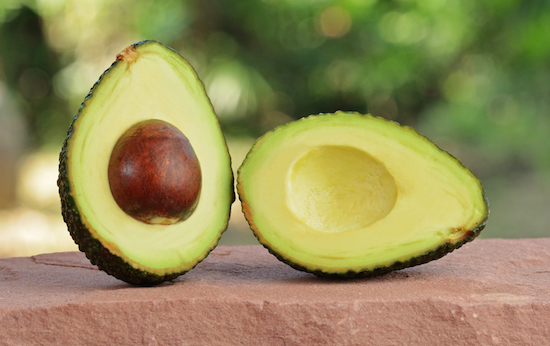
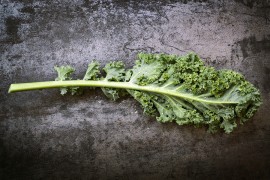
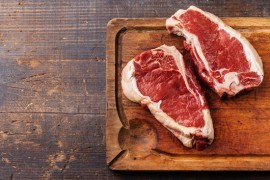
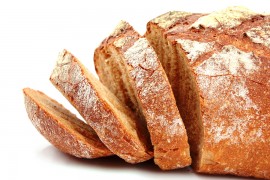
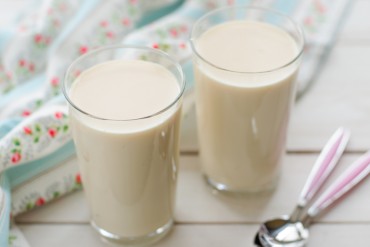
I love your list of potassium rich foods. Your post is a good reminder of its importance. Perhaps a source of where you obtained your list would be helpful for readers. Good info!
View CommentYes, I do need to go back through my sources and add that info to the article. The primary source was the USDA’s nutrient database but I did consult a couple of other sources, too 🙂
View CommentFor some reason, remembering to keep a healthy amount of potassium in the diet can be a challenge because it isn’t written about that much. We’ve remedied it by making sure that there is a constant supply of bananas and apples at home in addition to using many of the foods you mentioned in your post, Sarah. Thanks for sharing so much information!
View CommentThat’s great to hear, Vatsala!
View CommentWhen I first started reading I thought, Oh no, I’m not getting enough potassium but then I looked at your list & this is what I eat, all the time. So not worried. Thanks for a great article.
View CommentGreat to hear from another reader who’s eating so well 🙂
View CommentOne fruit I didn’t see on your list, which I always hear is high in potassium, is bananas, although they are also very high glycemic as well. They are my morning favourite with yogurt (plain) and protein powder. I do eat a lot of leafy greens daily, so looks like I get lots of potassium there too, as well as with coconut water. And as I don’t add any salt or eat processed/packaged foods, hopefully my daily needs are being met. Great article and good reminder to keep on top of the needed mineral balance in our bodies, Sarah.
View CommentThank you, Beverley! Bananas are on the list and I think they’re a great choice. I am often asked by readers and clients whether they should avoid bananas since they’re high-glycemic. For anyone reading this who is doing that, it’s true we shouldn’t overdo high-glycemic foods but for most of us, a banana or two a day is not only totally fine, but positively beneficial. A key distinction to be aware of is that bananas are one of the lower-fructose fruits (lower than apples, for example) and for reasons I touched on here, that’s a really good thing!
View CommentI DID NOT know all that about potassium. I have an autoimmune disease so I do eat a mostly whole food diet and with that great list of potassium rich foods you shared, it looks like I get plenty of it on a regular basis. Thank you so much for sharing this. I’m going to share your post with some others I know that could really use this information.
View CommentExcellent – thank you, Paula!
View CommentI’m really taking notes from your article, Sarah, because I could definitely need some more potassium in my diet. I eat a lot of those foods but I don’t know that when I add them all up I get to the required daily dose, just because so much is needed. Will definitely count how much I eat of it and watch how my energy level improves! I know that anybody can benefit from more energy 🙂
View CommentYes, Delia, you’ve hit the nail on the head there! We can be regularly eating plenty of the foods I listed but that doesn’t mean we’ve got potassium covered; as you say, because we need so much of it. I’ve found I really need to make a point of getting enough potassium; that’s why I wrote this article.
It’s become easier now that I’m mindful of the difference this mineral makes and of the foods I need to make a point of including. Before then, I’d find that whenever I totted up my potassium intake it would always be on the low side. So great idea to monitor yours for a little while ‚Ä쬆and, should yours be lower than optimum too, enjoy the difference you feel when you up it 🙂
View CommentI’ve been thinking about this article, and keeping track (roughly) of my intake. Not enough, even though we eat tons of veggies and not a lot of meat. I use a high quality multivitamin (New Chapter) and they don’t even include potassium! I also use TraceMinerals liquid minerals drops in my water bottle, and that only provides 3mg. Crazy!
View CommentThank you for the share! My suggestions would be:
View Comment(1) The top foods to include for a major potassium infusion – foods that are inexpensive and that most people also find quite easy to work into their day – are bananas, tomatoes (especially sun-dried), and potatoes;
2. While quality unrefined salt is fine, don’t overdo it as excess sodium increases the amount of potassium we need.
Hope that helps 🙂
Sarah, I just read your list and got so excited when I saw that Sundried Tomatos have so much potassium!!! I go low carb and I know I’m not getting enough. However, when I’m looking at SDT labels online and via My Fitness Pal, I’m being told across the board that SDTs have ZEROmg of potassium. Did I miss something? Is there a certain brand you’re referring to? Thank you!
View CommentHi!
That’s really strange, and definitely not correct for any product that is, or contains, real tomatoes.
The potassium content will vary from brand to brand, but tomatoes themselves are a good source of potassium, and removal of much of the water content, as happens with sun-drying, inevitably ups the gram for gram nutrient density.
Several reliable sources list sun-dried tomatoes as containing over 3,400mg of potassium per 100g, including the USDA Nutrient Database.
Sarah x
View CommentSarah – I came across your article in my search for more information on potassium. I have been prescribed a potassium supplement (Micro k 10) after some blood work showed that my potassium levels were slightly lower than normal range. I’ve been on this for over a year now. I would love to not be taking it because I fear my body might be exposed to too much potassium, even though my dr has said that’s not possible. Plus, I just don’t love taking prescription meds. What are your thoughts? Have you heard of too much potassium? Do you think someone can improve their potassium levels on foods only?
View CommentSugar is super low in potassium…
BUT.
Molasses carries 600mg of potassium per tablespoon.
Molasses cookies, anyone?
View CommentVery good article!! I just found your website and love it!!
Are the sun dried tomatoes the “dry” ones, or can they be packed in oil?
We grow our own tomatoes, so I am seriously considering a dehydrator to make my own next year.
Thank you so much!!
View CommentHi Carol!
Thank you for the lovely feedback!
The sun dried tomatoes can be either kind.
Sarah xo
View CommentHi,
So the sundried tomatoes that are slightly pickled normally sold with olives are they suitable to eat and buy?
View CommentYes
View CommentI came across your article and largely agree with what you’re saying. One thing I’ll point out is that potassium was not a required nutrient on food labels, so you may be consuming more potassium than you think. The FDA has changed this. Potassium along with Vitamin D are now going to be required on the labels, but the rules haven’t gone into full effect yet. You can find more info on this on the FDA’s website.
I also think it would be helpful if you adjusted your chart for potassium rich foods with regard to sun dried tomatoes. 100gs of sun dried tomatoes has a ton of potassium, but no one is going to sit down and eat that many sun dried tomatoes. Check out the label of some typical 8.5 oz jars of sun dried tomatoes. One serving is about 15 grams. 100g would require eating nearly the entire jar! That’s a bad idea when you see how much salt is typically included.
View CommentTo be honest, I don’t think 4700mg is a reasonable goal to achieve daily if you care about other health metrics – do you know how many carbs and calories you have to consume to meet this amount if you forego spinach?
100g of Sun-dried tomatoes is more carbs than I eat in an entire day (I eat 20g, and this is 23g). Not a very efficient fat-burning food at all, and it’s terrible if you’re trying to lose weight. There’s not enough fiber in these to counter-act this, and most people don’t exercise for 1-2 hours per day to burn it off before it goes into fat storage, which is what happens to half of America. Google also says it’s 1,565 mg instead of 3500, so I dunno who’s right here.
Baked potatoes are also high in carbs (a whopping 64g), and terrible for spiking insulin. The maximum daily carb intake for women 100g and 150g in men – and it’s 20-50g for people who can’t exercise 1-2 hours per day due to modern life. No thanks.
Beets are high in sugar and fructose – also not good for losing weight, preventing diabetes. Not enough fiber to counter-act these either.
Almonds are ridiculous in calories, so I dunno why you’d consume these just for potassium – that’s 576 calories for only 705g potassium, not to mention there’s 3.9g sugar and a butt-load of carbs in these. There are other nuts and foods that are honestly a lot better than Almonds. Again, not worth consuming and cross off your list.
Spinach – the 1ST GREAT source on your list – almost no carbs or calories, and a fair amount of potassium. But how much can you seriously eat per day? By my estimations using FitDay, you’d need 28 cups of spinach per day to meet your potassium requirements. Is anyone seriously eating more than 3-4 cups per salad?! I like Spinach a lot, but not that much.
Tomato Juice is not bad with respect to calories, but 1 cup has 9g of sugar, and that’s just too much for me. People shouldn’t even be having 16g of total sugar in their diet – the body doesn’t need it and you get fat when you consume too much of it (not to mention addiction, insulin spikes, and the creation of hormonal problems with leptin and ghrelin). Seriously, all of the high-sugar options on this list aren’t practical. You solve your potassium problem and you create insulin problems – i.e. NOT WORTH IT for more than 50% of the people on the planet (and probably a higher if you exclude most of Asia).
Halibut/Salmon – This is a pretty good one, but you can’t really consume a lot of this – perhaps 150g-200g worth, which is 379 calories and counts towards 1/3 of your total protein intake per day. You probably can’t have this every day or multiple meals per day… so we’re still left with Spinach as a much better consistent source for potassium, with Salmon/Halibut being thrown in for an extra boost 2-3 times per week.
Avocado – Your 3rd best item on the list. It’s very high in fiber, which counteracts the carbs. High in calories, but this is one of the healthiest fats on the planet. You can probably add in 1/2 – 1 avocado into your diet every day without adding pounds on the scale or negatively affecting health goals. But again, you’re not going to have it every day 365 days per year.
Kale, raw – Kale is okay, but you can’t really have more than 50g per day due to the higher carb in take, and you don’t want to overdo Vitamin A. Vitamin C is stupidly easy to consume too, so there is little reason to consume Kale over Spinach. Also, many people don’t digest it well unless you cook it, which kills the potassium. At least Spinach is editable in a salad for most people.
Pecans, Macadamia nuts – Your 5th best option, but you are pretty much left to consume 5-10 per day max, and even then I can barely fit that into my daily calories.
Lentils – You’d be crazy to consume these.
Carrots – too much sugar, you can’t have very often.
Chick peas – You’d be crazy to consume these
Tomatoes – Unless cherry tomatoes, too much sugar/carbs you can’t have often.
1 medium orange – only occasionally and none for me. They have 14g of sugar and only 4g of fiber.
Brown rice – you’d be crazy to consume a bunch of empty calories for just potassium.
1 medium apple – again, too much sugar and not enough fiber. Already beat the whole sugar/fructose thing to death by this point :/
So basically, the only sane options most people on the planet can have while being healthy in other areas of their diet are spinach, avocados, kale, halibut/salmon and the occasional pecans and macadamia nuts. Doesn’t sound like a lot of options to me.
View CommentHi Katie,
The 20g of carbs to which you limit yourself is not just a low carb diet but a *very* low carb diet – and my site is *not* a low (nor very low) carb diet site. While I appreciate the good reasons for limiting carbs and that of course it is very easy to overdo them, in my opinion, the negatives of restricting them to that extent far outweigh any positives.
There’s the stress and difficulty of keeping carb intake at such a low level, and all the healthy food options it cuts out (including the severe limits it puts on *fruit and vegetable* consumption – as illustrated so well by your comment). *Plus* the fact that anyone restricting carbs that much must by definition be getting a very high proportion of their calories from protein and/or fat. And there’s more convincing evidence that both of those might have negative health outcomes, than that increasing carbs to say 150g a day – still a low/restricted carb diet – would.
You say that you can’t have more than 50g of kale per day because of carb content, and that a person would have to be “crazy” to consume lentils, chick peas or brown rice… After falling into orthorexia in the past, what now seems crazy to me – as well as unhealthy – is that level of fear about eating moderate amounts of whole, natural foods.
As important as good nutrition is, we’re nourished not only by foods but by our emotions and relationships. As humans, we’re a highly adaptable species and can thrive on many different whole food diets. But we can’t thrive without joy and meaningful connections with others. And the reason I bring that in is that I know that at those times when I was preoccupied treating my diet like a stressful and complex mathematics puzzle that I had to get “right” every day – the times when I might have written a comment like the one you did – that took up so much time, energy and “bandwidth” that I had a lot less of those things available for connecting deeply with others and/or experiencing true joy.
And on those occasions when I was doing that in order to “balance the books” on a restricted carb regimen, we can add to that the physical, mental and emotional stress I so clearly remember experiencing, when trying to exist on a carb intake that was way lower than my body (and I would say most people’s) could happily sustain. And I’m talking there about times when I was trying to limit my carbs to no more than 100g a day.
This is genuinely meant to be helpful – to you and anyone else who might be reading it. You might not experience it that way and you might also disagree with every word! I’m unable to engage in further debate about those places where our opinions differ but I thank you for stopping by!
Sarah x
View CommentHi Sarah,
View CommentReally enjoyed reading this article. Super important mineral and I also love potassium broth!
Restricted diets are a concern aren’t they as it has such a negative impact on gut micro biota?
Great website, thanks for the info : )
Becca